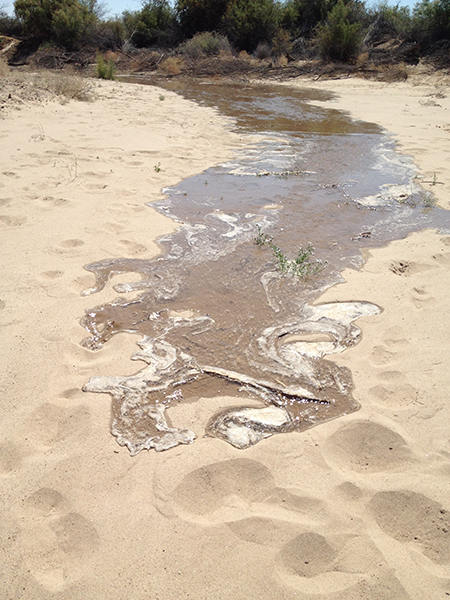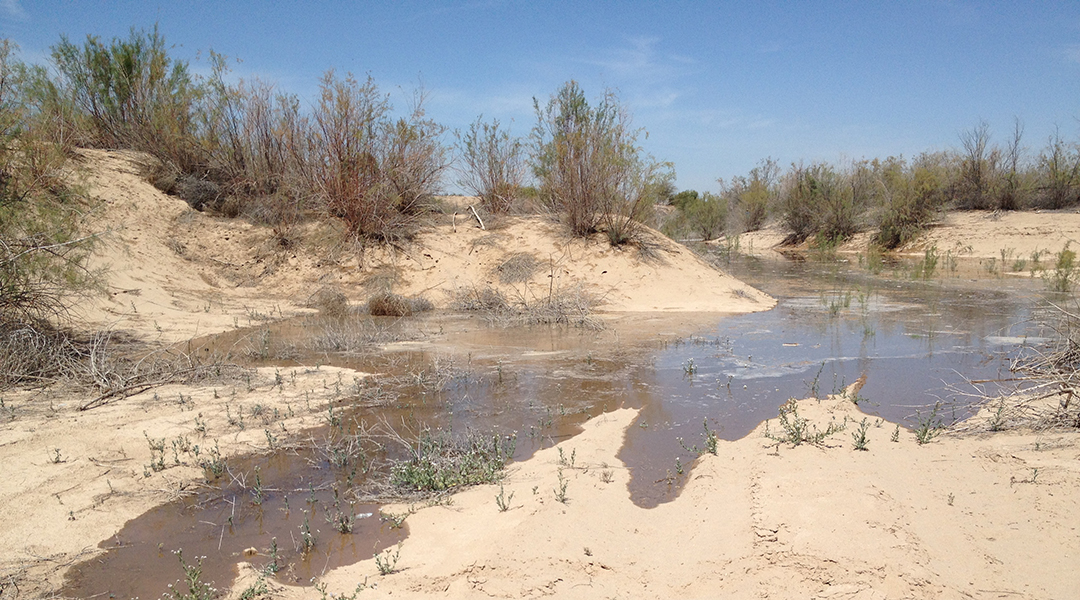Image credit: J. Eliana Rodriguez-Burgueno
“Non-perennial” rivers are those that have no streamflow for some or most of the year. For most of us, the description of a river that stops flowing each year conjures up a desert stream with dry, sandy banks that soak up ephemeral flows. Or perhaps we remember the vivid and spectacular scene in Into the Wild when Chris McCandless’ car is engulfed by a flash flood.
Although these arid environments provide the most well-known settings for non-perennial streams and rivers, high evapotranspiration rates, icy air temperatures, and seasonal snow melt can also dictate streamflow availability. Therefore, non-perennial streams occur across the globe and in all climates.
Scientists increasingly realize that non-perennial streams are hydrologically distinct from their perennial siblings. A recent study published in WIREs Water identifies the distinct physical processes through which rainfall becomes streamflow.

The occurrence or absence of each of these processes is unique in space and time along a non-perennial river. For example, at the beginning of a wet season, rain may fall faster than the soil allows it to enter the ground, causing water to flow across the surface into a stream. Later in the season, wetter soils may allow rainfall to flow underground towards the same stream. Because these processes are changing through time, non-perennial stream networks expand and contract. One reach of a stream can be flowing while another is dry, and this spatial distribution of wetness changes over time.
Many of the environments in which these rivers exist are challenging environments to explore. “They are notoriously difficult to sample, because streamflow can unexpectedly vary, washing away all your field equipment. Or there may be no flow at all while you have monitoring equipment ready,” says Margaret Zimmer, an author of the recent study.
Luckily, a variety of new technologies are emerging to fill this sampling need, from citizen science to unmanned aerial vehicles. Computer models are also increasingly being developed to test our understanding of how these rivers function. Although the shift from wet to dry and back to wet stream channels is difficult to accurately capture due to the complex numerical analysis, interest in non-perennial rivers is encouraging intrepid scientists to take on this challenge.
As an increasing global population moves into areas where non-perennial rivers are common, we need to understand how human water needs impact when, where, and how much these rivers flow. We rely on their flows and on the water they put back in our aquifers, so we also need to know how they are affected by our shifting climate.
Yet there is still a lot we don’t know about the hydrology of these streams. From shallow streambed properties to geologic controls, there is a wealth of knowledge ready to be learned. As scientists increasingly collaborate across disciplines, we can begin to better understand topics such as plant-water interactions, and how they affect streamflow.
As rivers and streams around the world are increasingly affected by our changing climate and water withdrawals to support a burgeoning human population, the more holistic approach this knowledge supports will be especially useful for protecting these special resources.
Written by Margaret Shanafield
Reference: Shanafield, M., Bourke, S., Zimmer, M., and Costigan, K., An overview of the hydrology of non‐perennial rivers and streams, WIREs Water (2021). DOI: 10.1002/wat2.1504

















